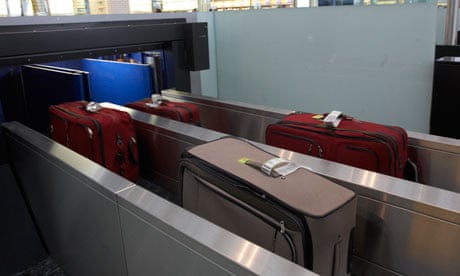Fresh consideration is to be given to the introduction of airport-style mass security screening at mainline rail stations and across London's tube network.
The Home Office has launched a search for new and emerging technologies that are capable of rapidly screening huge numbers of passengers and which could be used in major train and tube stations and across the tube network.
The new rail and tube screening technology is to be used to detect explosives, guns and knives, being carried by people and in bags, but would also need a capacity to spot chemical and biological materials. The screening equipment needs to be able to scan wheelchairs, prosthetics, crutches, pushchairs and bikes as well as people and their luggage.
The research brief for the Home Office centre for applied science and technology project says that the high volumes of passengers on the London Underground and national rail networks mean it is not possible to use traditional forms of checkpoint screening.
It says that while the stations can be defined as "crowded places", there are locations where crowd movement is "semi-controlled", such as at ticket barriers, queues, at the top and bottom of escalators and at platforms, which could prove suitable screening points.
The equipment may be fixed and built into the station furniture, or portable, to be used in different areas depending on passenger flow, threat level or intelligence.
The Department of Transport last carried out trials into the use of mass passenger screening at five mainline rail and tube stations in London in 2006 in the aftermath of the terrorist attacks on July 7 2005.
But research showed that while people were largely positive about the need to carry out the checks, they were not willing to accept major delays to their journey and wanted to ensure that their privacy was protected. People also preferred the use of sniffer-dogs to being singled out to go through an x-ray machine.
Transport ministers ruled out in June 2008 the use of airport-style screening of rail and underground systems, saying the technology then available meant it was not feasible to introduce 100% screening of such large passenger flows at the thousands of entry points on the UK rail and underground networks.
In taking the decision, the then transport minister, Tom Harris, said the public recognised the terrorist threat to the rail network and broadly supported the need for security measures, providing they were proportionate to the threat.
The current official UK threat level is at "substantial", which means a terrorist attack is regarded as a strong possibility. It was downgraded from "severe", which means a terrorist attack is highly likely, last July.
The Home Office expects the academic hunt for suitable new and emerging technologies to cope with the high volume of passengers involved will start next month, with results due next March.

Comments (…)
Sign in or create your Guardian account to join the discussion